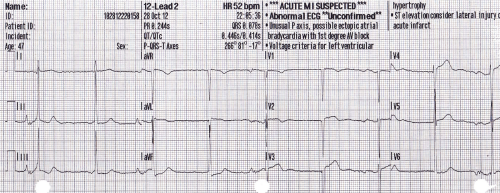In my last post, I explained why TEG is not so easy to use. Today, I’ll share the new Eastern Association for the Surgery of Trauma (EAST) practice management guidelines for using TEG and its twin, ROTEM for bleeding patients.
TEG first appeared in the trauma literature in 2008. A paper by John Holcomb showed that it was superior to the standard lab tests (PT, aPTT, and activated clotting time) in monitoring hemorrhagic shock in pigs. Since then, research has exploded with TEG papers. There have been about 50 published annually for the last four years.
In this month’s Journal of Trauma, EAST published their most recent practice management guideline, dedicating it to TEG. They identified over 6,000 potential papers and ultimately settled on 38 articles. They used them to attempt to answer three questions regarding use of these devices during resuscitation.
Question 1
In adult trauma patients with ongoing hemorrhage, should TEG/ROTEM be used vs non-TEG/ROTEM monitoring to guide transfusion strategy in order to reduce mortality, blood product transfusions and the need for additional hemostatic interventions such as angioembolization, endoscopy, or operation?
Answer: Only seven studies were found regarding this question. All but one showed no difference in 24 hour and hospital mortality. They also showed an inconsistent effect on blood product usage with some showing no difference and some shower less transfused product.
Nonetheless, EAST “conditionally recommended” the use of TEG/ROTEM. This is based solely on the presumption that it can reduce the risk of blood transfusions by using a test that is harmless.
Question 2
In adult surgery patients with ongoing hemorrhage, should TEG/ROTEM be used vs non-TEG/ROTEM monitoring to guide transfusion strategy in order to reduce mortality, blood product transfusions and the need for additional hemostatic interventions such as angioembolization, endoscopy, or operation? Note the shift here to non-trauma patients.
Twenty one studies were found addressing this question. Most papers showed no difference in reoperation rate. There were also no consistent differences in transfusion of various blood products. And the vast majority showed no difference in mortality.
But once again, EAST conditionally recommended the use of this test in these patients, mainly because it is believed to be harmless.
Question 3
In adult critically ill patients with ongoing hemorrhage, should TEG/ROTEM be used vs non-TEG/ROTEM monitoring to guide transfusion strategy in order to reduce mortality, blood product transfusions and the need for additional hemostatic interventions such as angioembolization, endoscopy, or operation?
There were only 10 studies relating to this question, and they included patients with a variety of surgical and medical problems. TEG/ROTEM was no better than non-TEG parameters in predicting the need to transfuse, but did somewhat better than clinical judgement. Once again, there was no consistent effect on the number of transfusions given, although some studies showed that use of non-TEG/ROTEM studies resulted in fewer units of red cells, platelets, and cryoprecipitate given.
Interestingly, although there was little difference in the number of units transfused, fewer patients required transfusion using TEG/ROTEM. There was no difference in mortality or interventions to stop bleeding.
Yet again, EAST conditionally recommended use of TEG/ROTEM in these patients despite the very low level of evidence. Again, this is mainly because of the lack of perceived harm in using it, and the possibility that it might reduce exposure to blood products.
Bottom line: Hmm. I remain skeptical. What EAST is saying is that, hey it’s harmless and there’s a chance that it might reduce a patient’s exposure to blood products, so why not? I have a vial of bat wings and eye of newt that might do the same thing. As long as it’s harmless, right?
Well, it may be clinically harmless, but it costs money and time. First, you have to buy the machine. Luckily, they are much cheaper than a CT scanner. But then the manufacturer kills you with the disposables. Like a cheap inkjet printer, you have to keep buying $40 ink cartridges every few weeks to keep it working. Except TEG cartridges cost more than $40.
And don’t overlook the time spent training people in how to interpret the curves. And developing a system to obtain the specimen and pay people to run the equipment. It all adds up, and yet the papers can’t show us any dramatic clinical results.
I’ll probably irritate the TEG/ROTEM true believers, but it still seems like a device searching for a great clinical problem to solve. IMHO we need much more high-quality research to help us figure out how this tool can help us with our trauma / surgical / critical care patients.
Reference: Thromboelastography and rotational thromboelastometry in bleeding patients with coagulopathy: Practice management guideline from the Eastern Association for the Surgery of Trauma. J Trauma 89(6):999-1017, 2020.



